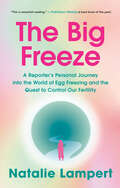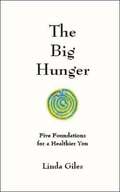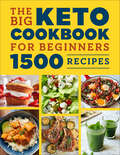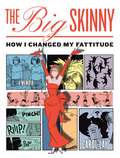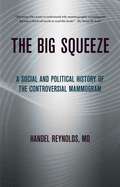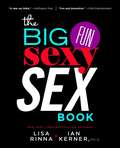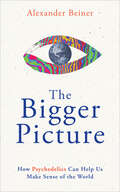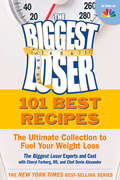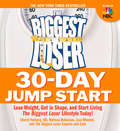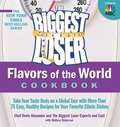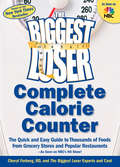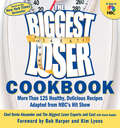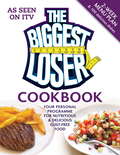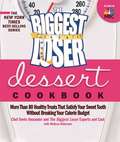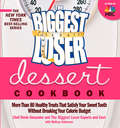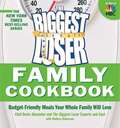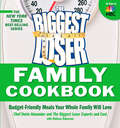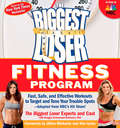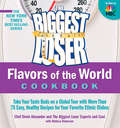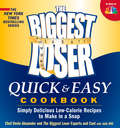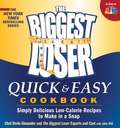- Table View
- List View
The Big Freeze: A Reporter's Personal Journey into the World of Egg Freezing and the Quest to Control Our Fertility
by Natalie LampertA fascinating investigation into the lucrative, minimally regulated, fast-growing industry of egg freezing, from a young reporter on a personal journey into the world of cutting-edge reproductive medicine&“An engaging and groundbreaking book.&”—Toni Weschler, MPH, author of Taking Charge of Your FertilityLONGLISTED FOR THE PEN/E.O. WILSON LITERARY SCIENCE WRITING AWARD • A PUBLISHERS WEEKLY BEST BOOK OF THE YEAROvaries. Most women have two; journalist Natalie Lampert has only one. Then, in her early twenties, she almost lost it, along with her ability to ever have biological children. Doctors urged her to freeze her eggs, and Lampert started asking questions. The Big Freeze is the story of Lampert's personal quest to investigate egg freezing as well as the multibillion-dollar femtech industry, in order to decide the best way to preserve her own fertility. She attended flashy egg-freezing parties, visited high-priced fertility clinics, talked to dozens of women who have frozen their eggs, toured the facility in Italy where the technology was developed, and even attended a memorial service for thousands of accidentally destroyed embryos. What was once science fiction is now simply science: Fertility can be frozen in time. Between 2009 and 2023, more than 150,000 women in the United States opted to freeze their eggs. Along with in vitro fertilization, egg freezing is touted as a way for women to &“have it all&” by conquering their biological clocks, in line with the global trend of delaying childbirth. A generation after the Pill, this revolutionary technology offers a new kind of freedom for women—career-focused ones in particular. But does egg freezing give women real agency or just the illusion of it? A personal and deeply researched guide to the pros, cons, and many facets of this wildly popular technology, The Big Freeze is a page-turning exploration of the quest to control fertility, with invaluable information that answers the questions women have been afraid to ask—or didn't know they should ask in the first place.
The Big Gluten-Free Cookbook for Beginners 2025: 150+ Super Easy Recipes for Healthy Eating
by Gigi Stewart B.S., M.A.Goodbye Gluten, Hello Healthy! The Big Gluten-Free Cookbook for Beginners 2025 has 160 easy recipes and one big goal: to make eliminating gluten easier than ever!Packed with essential information and over 160 tasty recipes, this COMPLETE gluten-free cookbook offers everything you need to be happy, healthy, and eat gluten free.Whether you're managing celiac disease, or just cutting out gluten for overall wellness, this guide is your comprehensive lifetime reference that offers a huge selection of recipes—plus fundamental information on how to live a gluten-free life.GLUTEN-FREE EATING 101: Get an in-depth introduction to the gluten-free diet, with support, guidance, and tips for understanding gluten intolerance, checking food labels, and preparing your own staples like gluten-free flour.YOUR GLUTEN-FREE KITCHEN: Learn how to organize your kitchen and groceries to be as gluten-safe as possible, especially if you share a kitchen with people who eat gluten.160 EASY, GLUTEN-FREE RECIPES: Get practical, quick, and easy recipes your whole family will love, including recipes that are 5-Ingredients or Less, One Pot, 30-Minutes or Less, and No Cook.NUTRITION INFO INCLUDED: Every recipe includes its complete nutrition facts, helping you stay on track with your health goals.FAVORITE FLAVORS FOR EVERYONE: Cook up gluten-free dishes like Grain-Free Pancakes, Easy Deli Wraps with Dipping Sauce, Sweet Potato Fritters, Chimichurri Salmon Salad, Creamy Dairy-Free Mushroom Soup, Grilled Fish Tacos, Roasted Harissa Chicken, Blueberry Coffee Cake, and so much more!NO EXPERIENCE REQUIRED: This book is made for beginners! If you've never tried gluten-free cooking and eating before, this is the perfect place to start.The Big Gluten-Free Cookbook for Beginners 2025 is the only book EVERY gluten-free kitchen needs!
The Big Hunger: Five Foundations for a Healthier You
by Linda GilesAre you a dieter? Do you swing back and forth from starving to stuffed? Are there things in your life you want to change? Do you alternate between being "perfect" and being "terrible"? If so, this book is for you. There is a hunger inside each of us that is bigger than the hunger we feel in our stomach. We hunger for love, friendship, inner peace and wholeness ... things that food can never satisfy. The Big Hunger is a collection of stories and experiences that show how to recognize and fulfill our greatest needs in life. Based on the author's "Five Foundations" classes, this book offers practical tips for a healthier you.
The Big Keto Cookbook for Beginners: 1500 Recipes
by Rockridge PressThe Ultimate Keto Cookbook with 1,500 Simple Recipes!Do you crave delicious food AND sustainable weight loss? Are you struggling to stay motivated on a keto diet? Whether you're new to keto or an experienced practitioner, this comprehensive cookbook makes it easier than ever to adapt the keto diet to your lifestyle so you can stick with it and feel great! It's the biggest collection of keto recipes on the market with hundreds of options for every meal, snack, dessert, and drink. You'll never feel deprived with this complete keto cookbook!Beginners will learn all about the ketogenic diet and the 5 simple steps to going keto. Each recipe in this low-carb cookbook contains key nutritional information, including carbohydrates, fiber, fat, and protein, so you can easily keep track of your macros. This easy-to-navigate cookbook includes 1,500 foolproof recipes that use basic ingredients, are simple to prepare, and taste great:Quick keto lunch and dinner recipesEnergizing snacks and appetizersNo-fuss smoothies and shakesDecadent keto sweets and dessertsPressure cooker and air fryer recipesSatisfying sweet and savory baked goodsYummy keto sauces and staplesKeep your energy up and your weight down with this comprehensive keto recipe book.
The Big Necessity: The Unmentionable World of Human Waste and Why It Matters
by Rose GeorgeDelving deep into the history and implications of a daily act that dare not speak its name, The Big Necessity is on its way to removing the taboo on bodily waste something common to all and as natural as breathing.
The Big Picture: 11 Laws that Will Change Your Life
by Tony HortonPart Tony Robbins, part Mehmet Oz, here is fitness guru and creator of P90X Tony Horton’s wake-up call for readers—a motivational and practical guide to creating a better life and a healthier body.One of America’s best-known and most-loved fitness gurus, "master of motivation" Tony Horton shares his philosophy that will help you live your best life. In his first non-workout book, he offers 11 Rules that provide a clear path and purpose for achieving life goals and obtaining optimal health.Written with his trademark irreverence, candor, and take-no-prisoners approach, The Big Picture shows you how your physical health is intricately linked to your mental, financial, and family health, and overall happiness and contentment—and how the same skills and principles that work in the gym work in every area of life. Tony shares stories of the hard-won battles he’s faced—many of the same life challenges experienced by his fans—from childhood bullies and problems at school, to financial troubles and being overweight.Enlightening and practical, The Big Picture can help you how to slim down, feel good, and live better.
The Big Skinny: How I Changed My Fattitude
by Carol LayHere’s the skinny: After a lifetime of yo-yo dieting with pills, hypnosis, and ill-informed half-measures, Carol Lay finally shed her excess pounds and kept them off. Now this California cartoonist shares her experiences in a funny, genuine, and eye-popping graphic memoir that tells Carol’s story and shows you how you can do it, too.
The Big Squeeze
by Handel ReynoldsIn 2009, an influential panel of medical experts ignited a controversy when they recommended that most women should not begin routine mammograms to screen for breast cancer until the age of fifty, reversing guidelines they had issued just seven years before when they recommended forty as the optimal age to start getting mammograms. While some praised the new recommendation as sensible given the smaller benefit women under fifty derive from mammography, many women's groups, health care advocates, and individual women saw the guidelines as privileging financial considerations over women's health and a setback to decades-long efforts to reduce the mortality rate of breast cancer. In The Big Squeeze, Dr. Handel Reynolds, a practicing radiologist, notes that this episode was only the most recent controversy in the turbulent history of mammography since its introduction in the early 1970s. In a book written for the millions of women who face the decision about whether to get a mammogram, health professionals interested in cancer screening, and public health policymakers, Reynolds shows how pivotal decisions made during mammography's initial launch made it all but inevitable that the test would be contentious. He describes how, at several key points in its history, the emphasis on mammography screening as a fundamental aspect of women's preventive health care coincided with social and political developments, from the women's movement in the early 1970s to breast cancer activism in the 1980s and '90s. At the same time, aggressive promotion of mammography made the screening tool the cornerstone of a huge new industry. Taking a balanced approach to this much-disputed issue, Reynolds addresses both the benefits and risks of mammography, charting debates, for example, that have weighed the early detection of aggressively malignant tumors against unnecessary treatments resulting from the identification of slow-growing and non-life-threatening cancers. The Big Squeeze, ultimately, helps to evaluate the ongoing public health controversies surrounding mammography and provides a clear understanding of how mammography achieved its current primacy in cancer screening.
The Big, Fun, Sexy Sex Book
by Lisa Rinna Ian KernerJUST SAY O! • Have flannel pj’ s replaced your silky negligees? • Are you more likely to nod off cuddling the remote—instead of your partner? • Are you too tired for sex? • Is foreplay becoming “boreplay”? Sure, being comfortable in your relationship is great. You can finish each other’s sentences, love your partner’s extra ten pounds, and know just the right buttons to push in bed (or at least think you do). But too much comfort can strip your sex life of its XXX rating and render your love life . . . lifeless. New York Times bestselling author and nationally recognized sex counselor Ian Kerner and vivacious television personality Lisa Rinna, who spoke candidly about rediscovering her own lost libido in her New York Times bestseller Rinnavation, are on a mission to help you get from “no-go” to the Big O. Mind-blowing sex is just pages away! Turn down the lights and cozy up under the sheets with this intimate bedside guide to igniting your mojo. Overflowing with candid advice, tips, techniques, personal revelations, sexercises, and even a ten-step plan guaranteed to rejuvenate your relationship and keep you and your partner coming back for more, The Big, Fun, Sexy Sex Book proves that knowledge isn’t just power—it’s also pleasure! Now, let’s have some fun! *** HE SAYS: “What happens outside the bedroom affects what happens in the bedroom, and when couples are connected intimately, their relationship can be more vital and stronger than they ever imagined.” SHE SAYS: “Don’t underestimate a real woman. You want to know about great sex? I’ll show you great sex. You want a cougar? I’ll give you a tigress! I’m just show you great sex. You want a cougar? I’ll give you a tigress! I’m just reaching my peak, and I feel sexier than ever—and so can you!” IT’S NEVER TOO LATE TO GET THE SEX LIFE YOU ALWAYS WANTED! * Sexy scenarios and hot new moves to amp up the adventure! * The best sexual positions to make you climax * Confidence boosters that make you feel sexier than ever and bring out your inner thrill-seeker * Oral sex and hand job tips that will make his body go nuclear * Fixes for common bedroom problems such as low desire, mismatched libidos, and sexual boredom * Tips for coping with sexual “male-functions” such as premature ejaculation, erectile disorder, and a propensity for porn * The ten-step sex workout * The most amazing sex of your life—at any age, even after kids!
The Bigger Picture: How Psychedelics Can Help Us Make Sense of the World
by Alexander BeinerCan psychedelic drugs help us tackle the biggest problems we face globally? Can they heal the cultural, spiritual, and political wounds we&’re wrestling with?Psychedelics have hit the mainstream as powerful new mental health treatments. But as clinicians explore what these molecules can do for our individual minds, The Bigger Picture goes further to illuminate how psychedelics can help us find new ways to make sense of and come through the crises we face around the world.Drawing on the latest research, as well as his unique experience as a participant in a ground-breaking clinical trial investigating the potent psychedelic DMT, Alexander Beiner reveals:the role of psychedelics in addressing global issues such as global warming, geopolitical instability, and political polarization the dark side of the &‘psychedelic renaissance&’ and &‘psychedelic capitalism&’what it takes to elicit huge personal and cultural transformation through psychedelicsEmbark on a journey into The Bigger Picture – a new era of science and spirituality with the potential to radically transform our perceptions of ourselves, one another, and our life on this planet.
The Biggest Loser 101 Best Recipes: The Ultimate Collection to Fuel Your Weight Loss
by Devin Alexander Cheryl Forberg Biggest Loser Experts CastThroughout the numerouse seasons of The Biggest Loser, America has watched the contestants lose more than 25,000 pounds. In addition to the hardcore workouts the Biggest Losers put in each day at the Ranch, the most essential component of their weight loss plan is eating healthy foods that are low in calories--but big on flavor.At the Ranch the contestants learn about nutrition, portion control, and meal preparation--and by the time they leave the campus, even those who have never spent much time in the kitchen can cook wholesome, delicious meals for their families back home. In The Biggest Loser 101 Best Recipes, you'll find the very best developed by The Biggest Loser experts and cast over the last seven years. Whether you're craving pizza or a burger, pasta or cupcakes--you'll find healthier, lower-calorie versions of all of your favorite foods right here, along with some new ingredients and flavors you may have never tried before.You don't have to give up the foods you love to lose weight--you just have to make smarter choices. And now, you have 101 ways to start losing weight and get health--one delicious bite at a time.
The Biggest Loser 30-Day Jump Start: Lose Weight, Get in Shape, and Start Living the Biggest Loser Lifestyle Today!
by Lisa Wheeler Melissa Roberson Cheryl Forberg Biggest Loser Experts and CastOver the last six seasons of The Biggest Loser, you've watched as contestants shed pounds, got healthy, and dramatically changed their lives for the better. In fact, you may have been so inspired by the show's remarkable success stories that you've considered embarking on your own weight loss journey. If you're looking to get healthy now, there's good news: You don't have to spend time at the ranch to benefit from The Biggest Loser magic. The Biggest Loser 30-Day Jump Start brings all of the secrets of the ranch right into your own home. The Biggest Loser experts—the same ones who advise the contestants—are here to walk you through a 30-day plan that will kick off your weight loss and help you build new, healthy habits. In this book you'll find easy-to-follow menus, recipes, exercise plans, and motivation for each day of the week. You'll also find helpful tips and advice from past Biggest Losers who have been in your shoes, including the nine contestants from Season 7 who left the ranch early to follow this very plan at home. So far, the Biggest Losers have lost more than a combined 10,000 pounds. But for each of them, the journey started with a commitment: to health, to weight loss, and to themselves. The first steps toward a healthier future are in this book—what are you waiting for? Make the commitment, take the leap—and begin your 30 day jump start today!
The Biggest Loser Around the World: Take Your Taste Buds on a Global Tour with More Than 75 Easy, Healthy Recipes
by Devin Alexander Melissa RobersonPizza. Huevos Rancheros. Pad Thai. Enchiladas. Some of America's most-craved foods aren't American in the traditional sense they're the international foods we love to order at restaurants or have delivered to our homes. But most renditions of these beloved ethnic dishes are full of fat and calories. How can dieters get the flavor they crave, without buying one of those reduced-calorie frozen meals that are full of salt and other preservatives? Now, with The Biggest Loser: International Cookbook , they can have their lasagna and eat it too! With more than 75 recipes for favorite ethnic staples as well as legendary regional American cuisine created by Chef Devin Alexander and The Biggest Loser contestants, healthy eating has never been more exciting. Readers will discover how former contestants reinvented favorite dishes from their own cultures and regions to fit into their healthy new lifestyle, and will learn how to cut the calories and fat from America's most-loved ethnic foods. And Chef Devin Alexander 's reliably decadent creations save both money and calories, as any of these dishes can be made at home for a fraction of the cost of a restaurant or take-out meal. The book will include recipes for meals, snacks, dinners, and desserts, and will cover a wide range of cuisines, from the down-home Southern classics to delicious Asian dishes, Mexican favorites, hearty Italian meals, and many others. The book will also include cooking tips from Chef Devin, weight loss advice from the contestants and trainers, and an overview of the Biggest Loser food plan. The Biggest Loser: International Cookbook will show readers how to expand their culinary horizons without expanding their waistlines!
The Biggest Loser Complete Calorie Counter: The Quick and Easy Guide to Thousands of Foods from Grocery Stores and Popular Restaurants
by Cheryl Forberg Biggest Loser Experts Cast<p>Based on the New York Times bestseller, with calorie counts for more than 5,000 foods! Millions of inspired viewers have seen overweight contestants shape up and slim down on The Biggest Loser, NBC's hit unscripted show. <p>Amazingly, their striking health makeovers were based on a simple "calories in/calories out" weight-loss strategy. <p>This user-friendly guide is the perfect resource for anyone, whether you're looking to follow The Biggest Loser Weight Loss Plan or trying to stay informed about the foods you eat each day. <p>With full nutritional analysis of thousands of foods and dining-out information ranging from fast-food favorites to sushi and other ethnic cuisines, The Biggest Loser Complete Calorie Counter has all you need to know to become the next Biggest Loser!
The Biggest Loser Cookbook: More Than 125 Healthy, Delicious Recipes Adapted from NBC's Hit Show
by Devin Alexander Karen KaplanMore Than 125 Healthy, Delicious Recipes From The Biggest Loser Experts and Cast "As Seen On NBC's Hit Show! By The Biggest Loser experts and cast Building on the groundbreaking success of The Biggest Loser brand, this sequel to last year's best-selling book is sure to be a hit! The Biggest Loser Cookbook offers: 125 recipes from The Biggest Loser cast, trainers, and fans, motivational before-and-after photographs of the cast, 50 beautiful 4-color food shots and dozens of trainer tips from The Biggest Loser trainers, inspiring stories of how the cast members did it, at-a-glance guides to The Biggest Loser Diet and The Biggest Loser Exercise plan. Armed with this arsenal of nutritional information and training tips, readers will be inspired to achieve the dramatic weight loss transformations that have amazed TV fans around the country.
The Biggest Loser Cookbook: More Than 125 Healthy, Delicious Recipes Adapted from NBC's Hit Show (Biggest Loser)
by Devin Alexander Karen Kaplan Biggest Loser Experts Cast<p>The Biggest Loser Cookbook provides more than 125 healthy, delicious recipes from The Biggest Loser experts and cast—as seen on NBC's hit show! <p>Building on the groundbreaking success of The Biggest Loser brand, this sequel to the best-selling book is sure to be a hit! <p>The Biggest Loser Cookbook offers: <br>• 125 recipes from The Biggest Loser cast, trainers, and fans <br>• motivational before-and-after photographs of the cast <br>• 50 beautiful 4-color food shots <br>• dozens of trainer tips from The Biggest Loser trainers• inspiring stories of how the cast members did it <br>• at-a-glance guides to The Biggest Loser Diet and The Biggest Loser Exercise plan armed with this arsenal of nutritional information and training tips, readers will be inspired to achieve the dramatic weight loss transformations that have amazed TV fans around the country.
The Biggest Loser Cookbook: Your personal programme for nutritious & delicious guilt-free food
by HamlynThe Biggest Loser Cookbook presents over 100 recipes and ideas for calorie-counted meals that help you lose weight fast in a safe and sustainable way. With simple, delicious and satisfying recipes at your fingertips, you'll be able to shed the pounds and feel fantastic. There's a 14-day menu plan and ideas for cheats and swaps that make it easy to incorporate healthier foods into your everyday routine. With shopping lists to help you buy exactly what you need you'll find it hard not to see the weight disappear in a matter of weeks. Designed with series promotion in mind this cookbook is the perfect accompaniment to The Biggest Loser: Your Personal Programme for Permanent Weight Loss with additional recipes and tips that will help you achieve (and maintain!) the body you've always wanted.
The Biggest Loser Dessert Cookbook: More Than 80 Healthy Treats That Satisfy Your Sweet Tooth without Breaking Your Calorie Budget
by Devin Alexander Melissa RobersonBased on the hit NBC series "The Biggest Loser, The Biggest Loser Dessert Cookbook" by bestselling author Chef Devin Alexander shows readers how to indulge sensibly with more than 80 guilt-free recipes made from wholesome, all-natural ingredients.
The Biggest Loser Dessert Cookbook: More than 80 Healthy Treats That Satisfy Your Sweet Tooth without Breaking Your Calorie Budget (Biggest Loser)
by Devin Alexander Melissa Roberson Biggest Loser Experts Cast<p>Each season on The Biggest Loser, we watch the contestants sweat their way to a healthier body and a brand new lease on life. <p>But the dramatic changes that unfold on our television screens are only part of the story. <p>To be successful at home, the contestants have to develop strategies and sustainable habits they can maintain for the long haul. <p>And that includes learning how to satisfy sweet cravings—and keep deprivation at bay. <p>In The Biggest Loser Dessert Cookbook, bestselling author Chef Devin Alexander shows you how to indulge sensibly with more than 80 guilt-free recipes made from wholesome, all-natural ingredients. <br>• Rediscover your passion for fruit with desserts like the Naked Apple Tart, Cherry-Vanilla Almond Parfait, and Strawberry Cloud Soufflés <br>• Cool down your cravings with frozen treats such as the Waffle Ice Cream Sandwich, Mango-Peach Key Lime Sorbet Popsicles, and Pumpkin Ice Cream <br>• Share your sweets with a crowd with bake-sale favorites like Fudge Swirl Peanut Butter Cupcakes, Go Blue-Berry Cobbler Mini Loaves, and Pecan Praline Cookie Thins <br>• Sip your way to satisfaction with the Mango Lassi Milkshake, Peach No-Belly Bellini, and Icy Chai ShakeLosing weight is all about making smarter choices—not giving up the foods you love. <p>Turn your guilty pleasures into healthy indulgences today!
The Biggest Loser Family Cookbook: Budget-Friendly Meals Your Whole Family Will Love
by Devin Alexander Melissa RobersonGrocery costs are on the rise and many family cooks are finding themselves in a tough predicament: how can they feed their families healthy, satisfying meals without breaking the bank? In The Biggest Loser Family Cookbook: Budget-Friendly Meals Your Whole Family Will Love, New York Times best-selling author Devin Alexander shows families that eating on a budget can be easy, nutritious, and delicious. With more than 125 recipes specifically developed to satisfy every member of the family, Chef Alexander provides complete, affordable meal plans for breakfast, lunch, and dinner, along with mix-and-match side dishes, healthy snacks, and desserts. From Swiss Mushroom Omelets to Steak Fajita Quesadillas, Family Sized Meatball Parmesan to Chocolate Cherry Truffles, these wholesome, satisfying dishes will become an essential part of every family cook's repertoire. In addition to an overview of the Biggest Loser eating plan and Chef Alexander's recipes, you'll find helpful cooking and cost-saving tips from favourite Biggest Loser contestants and online club members. You'll also find simple ways to get kids involved in the kitchen and fun ideas for family mealtime. Designed to make healthy eating accessible for everyone, The Biggest Loser Family Cookbook will help pad your wallet not your waistline.
The Biggest Loser Family Cookbook: Budget-Friendly Meals Your Whole Family Will Love (Biggest Loser)
by Devin Alexander Melissa Roberson Biggest Loser Experts Cast<p>As grocery costs continue to rise, many family cooks are finding themselves in a tough predicament: How can they feed their families healthy, satisfying meals without breaking the bank? <p>In The Biggest Loser Family Cookbook, New York Times bestselling author Devin Alexander shows families that eating on a budget can be easy, nutritious-and delicious! <p>With more than 125 recipes that will satisfy every member of the family, Chef Alexander provides complete, affordable options for breakfast, lunch, and dinner, along with mix-and-match side dishes, healthy snacks, and desserts. <p>From Broccoli & Cheddar Frittatas to Steak Fajita Quesadillas, Family Sized Meatball Parmesan to Peanut Butter Fudge Sundaes, these wholesome, satisfying dishes will become an essential part of every family cook's repertoire. <p>In addition to an overview of the Biggest Loser eating plan and Chef Alexander's recipes, readers will find helpful cooking and cost-saving tips from favorite Biggest Loser contestants and online club members. <p>They will also find simple ways to get kids involved in the kitchen and fun ideas for family mealtimes. Designed to make healthy eating accessible for everyone, The Biggest Loser Family Cookbook will help pad wallets--not waistlines.
The Biggest Loser Fitness Program: Fast, Safe, and Effective Workouts to Target and Tone Your Trouble Spots--Adapte d from NBC's Hit Show! (Biggest Loser)
by Maggie Greenwood-Robinson Biggest Loser Experts Cast<p>Thanks to The Biggest Loser, NBC's unscripted hit show, dozens of overweight contestants have improved their health with dramatic weight-loss transformations. <p>Thousands of inspired fans of the show have undergone personal weight-loss journeys, using the tools and tips provided by the show's experts and medical professionals. <p>Now, the workout moves used by the show's trainers to train and tone the Biggest Losers on television are available for you to use at home or in the gym. <p>The trainers will reveal:-The most efficient and effective move for a toned belly-Time-saving workouts designed for today's busy schedules-Beginner and advanced modifications-Sensible and real-life eating advice from the show's nutrition experts. <p>Not all of us can be on television, but everyone can use this fitness program for improved health and weight loss. Complete with advice from the Biggest Losers themselves and built-in motivation from the show's trainers and experts, The Biggest Loser Fitness Program will inspire you to fight fat and beocme the biggest loser!
The Biggest Loser Flavors of the World Cookbook: Take your taste buds on a global tour with more than 75 easy, healthy recipes fo r your favorite ethnic dishes (Biggest Loser)
by Devin Alexander Melissa Roberson Biggest Loser Experts CastPizza. Huevos Rancheros. Pad Thai. Enchiladas. Some of America's most-craved foods aren't "American" in the traditional sense—they're the international foods we love to order at restaurants or have delivered to our homes. But most renditions of these beloved ethnic dishes are full of fat and calories. How can dieters get the flavor they crave, without buying one of those reduced-calorie frozen meals that are full of salt and other preservatives?Now, with The Biggest Loser Flavors of the World Cookbook, you can have your lasagna and eat it too! With more than 75 recipes for favorite ethnic staples as well as legendary regional American cuisine created by Chef Devin Alexander and The Biggest Loser contestants, healthy eating has never been more exciting.Discover how former contestants reinvented favorite dishes from their own cultures and regions to fit into their healthy new lifestyle, and how to cut the calories and fat from America's most-loved ethnic foods. And Chef Devin Alexander's reliably decadent creations save both money and calories, as any of these dishes can be made at home for a fraction of the cost of a restaurant or take-out meal.The book will include recipes for meals, snacks, dinners, and desserts, and will cover a wide range of cuisines, from the down-home Southern classics to delicious Asian dishes, Mexican favorites, hearty Italian meals, and many others. The book also includes cooking tips from Chef Devin, weight loss advice from the contestants and trainers, and an overview of the Biggest Loser food plan.The Biggest Loser Flavors of the World Cookbook shows you how to expand your culinary horizons—without expanding your waistlines!
The Biggest Loser Quick & Easy Cookbook: Simply Delicious Low-calorie Recipes to Make in a Snap (Biggest Loser)
by Devin Alexander Biggest Loser Experts CastThe first cookbook in the bestselling Biggest Loser series to focus on fast, simple meals that you can eat on the go, The Biggest Loser Quick & Easy Cookbook features more than 75 easy recipes with 20 minutes of prep time or less, accompanied by beautiful 4-color photography. <p>The book also provides an overview of The Biggest Loser eating plan; include five 20 minute workouts with tips on how to burn the most calories in the least amount of time, offer healthy cooking and baking tips and techniques as well as shopping lists and pantry basics; and as always, will feature tips from the trainers and contestants on time-saving techniques for fitting healthy meals into busy schedules. <p>The 75 quick and easy recipes include such categories as breakfast on the double, speedy soups and sandwiches, throw-together salads and sides, mains in minutes, lickety-split sweet bites, and more. <p>Sample recipes include: <br>• Asparagus & Chicken Apple Sausage Scramble <br>• Sausage Feta Pepper Breakfast Bake <br>• Blanca Arugula Pizza <br>• Monkey Trail Mix <br>• Caprese Burger <br>• Cold Dumpling Salad <br>• Garlic & Herb Mac & Cheese <br>• Spicy Cayenne Corn on the Cob <br>• Coffee Crusted Chopped Steak <br>• Philly Cheese Steak Pizza <br>• Crispy Pesto Cod <br>• Meyer Lemon Seared Scallops <br>• Chocolate Raspberry Dreamers <br>• Honey Nut Apple Butter Rice Cakes
The Biggest Loser Quick and Easy Cookbook: Simply Delicious Low-Calorie Recipes to Make in a Snap
by Devin AlexanderThe first cookbook in the bestselling Biggest Loser series to focus on fast, simple meals that you can eat on the go,The Biggest Loser Quick & Easy Cookbook features more than 75 easy recipes with 20 minutes of prep time or less, accompanied by beautiful 4-color photography. The book also provides an overview of The Biggest Loser eating plan; include five 20 minute workouts with tips on how to burn the most calories in the least amount of time, offers healthy cooking and baking tips and techniques as well as shopping lists and pantry basics; and as always, features tips from the trainers and contestants on time-saving techniques for fitting healthy meals into busy schedules. The 75 quick and easy recipes include such categories as breakfast on the double, speedy soups and sandwiches, throw-together salads and sides, mains in minutes, lickety-split sweet bites, and more.
